Philosophy Series Contents (to be updated with each new installment)
Philosophy Series 1 – Prelude to the Philosophy Series
Philosophy Series 2 – Introduction
Philosophy Series 3 – Appendix A, Part 1
Philosophy Series 4 – The Pre-Socratics – Hesiod
Philosophy Series 5 – A Detour of Time
Philosophy Series 6 – The Origin
Philosophy Series 7 – Eros
Philosophy Series 8 – Thales
Philosophy Series 9 – An Interlude to Anaximander
Philosophy Series 10 – On the Way to Anaximander: Language and Proximity
Philosophy Series 11 – Aristotle and Modernity: The Eternal and Science
Philosophy Series 12 – Levinas and the Problem of Metaphysics
Philosophy Series 13 – On Origin
Philosophy Series 14 – George Orwell and Emmanuel Levinas Introspective: Socialism and the Other
————————————————
Philosophy Series 4
Theogony 105-133
χαίρετε, τέκνα Διός, δότε δ᾽ ἱμερόεσσαν ἀοιδήν.
κλείετε δ᾽ ἀθανάτων ἱερὸν γένος αἰὲν ἐόντων,
οἳ Γῆς τ᾽ ἐξεγένοντο καὶ Οὐρανοῦ ἀστερόεντος,
Νυκτός τε δνοφερῆς, οὕς θ᾽ ἁλμυρὸς ἔτρεφε Πόντος.
εἴπατε δ᾽, ὡς τὰ πρῶτα θεοὶ καὶ γαῖα γένοντο
καὶ ποταμοὶ καὶ πόντος ἀπείριτος, οἴδματι θυίων,
ἄστρα τε λαμπετόωντα καὶ οὐρανὸς εὐρὺς ὕπερθεν
οἵ τ᾽ ἐκ τῶν ἐγένοντο θεοί, δωτῆρες ἐάων
ὥς τ᾽ ἄφενος δάσσαντο καὶ ὡς τιμὰς διέλοντο
ἠδὲ καὶ ὡς τὰ πρῶτα πολύπτυχον ἔσχον Ὄλυμπον.
ταῦτά μοι ἔσπετε Μοῦσαι, Ὀλύμπια δώματ᾽ ἔχουσαι
ἐξ ἀρχῆς, καὶ εἴπαθ᾽, ὅ τι πρῶτον γένετ᾽ αὐτῶν.
ἦ τοι μὲν πρώτιστα Χάος γένετ᾽, αὐτὰρ ἔπειτα
Γαῖ᾽ εὐρύστερνος, πάντων ἕδος ἀσφαλὲς αἰεὶ
ἀθανάτων, οἳ ἔχουσι κάρη νιφόεντος Ὀλύμπου,
Τάρταρά τ᾽ ἠερόεντα μυχῷ χθονὸς εὐρυοδείης,
ἠδ᾽ Ἔρος, ὃς κάλλιστος ἐν ἀθανάτοισι θεοῖσι,
λυσιμελής, πάντων δὲ θεῶν πάντων τ᾽ ἀνθρώπων
δάμναται ἐν στήθεσσι νόον καὶ ἐπίφρονα βουλήν.
ἐκ Χάεος δ᾽ Ἔρεβός τε μέλαινά τε Νὺξ ἐγένοντο:
Νυκτὸς δ᾽ αὖτ᾽ Αἰθήρ τε καὶ Ἡμέρη ἐξεγένοντο,
οὓς τέκε κυσαμένη Ἐρέβει φιλότητι μιγεῖσα.
Γαῖα δέ τοι πρῶτον μὲν ἐγείνατο ἶσον ἑαυτῇ
Οὐρανὸν ἀστερόενθ᾽, ἵνα μιν περὶ πάντα καλύπτοι,
ὄφρ᾽ εἴη μακάρεσσι θεοῖς ἕδος ἀσφαλὲς αἰεί.
γείνατο δ᾽ Οὔρεα μακρά, θεῶν χαρίεντας ἐναύλους,
Νυμφέων, αἳ ναίουσιν ἀν᾽ οὔρεα βησσήεντα.
ἣ δὲ καὶ ἀτρύγετον πέλαγος τέκεν, οἴδματι θυῖον,
Πόντον, ἄτερ φιλότητος ἐφιμέρου: αὐτὰρ ἔπειτα
Οὐρανῷ εὐνηθεῖσα τέκ᾽ Ὠκεανὸν βαθυδίνην2
Hail, children of Zeus! Grant lovely song and celebrate the holy race of the deathless gods who are for ever, those that were born of Earth and starry Heaven and gloomy Night and them that briny Sea did rear. Tell how at the first gods and earth came to be, and rivers, and the boundless sea with its raging swell, and the gleaming stars, and the wide heaven above, and the gods who were born of them, givers of good things, and how they divided their wealth, and how they shared their honors amongst them, and also how at the first they took many-folded Olympus3. Tell me all of this, you Muses who have your homes on Olympus, from the beginning [archê, ἀρχῆς], tell who first of them (the gods) came-to-be [genet’, γένετ᾽].
First of all Chaos came-to-be [genet’, γένετ᾽]; but then afterwards Broad-breasted earth, a secure dwelling place forever for all [the immortals who hold the peaks of snowy Olympus], and misty Tartara in the depths under the wide-wayed grounds and Eros who, handsomest among the deathless gods a looser of limbs, in all the gods and in all human beings overpowers in their breasts their intelligence and careful planning. And from Chaos came-to-be both Erebos [ρεβος, the god of deep darkness, shadow] and dark night, and from night, in turn, came-to-be both Aither [the god of upper air, the mist of bright, glowing light, home of the gods] and day, whom she conceived and bore after joining in love with Erebos. But earth first begat, as an equal to herself, starry sky, so that he might cover her on all sides, in order to be a secure dwelling place forever for all the blessed gods, and she begat the tall mountains, pleasing haunts of the goddess-nymphs who make their homes in the forested hills, and also she bore the barren main with its raging swell, the sea, all without any sweet act of love; but then next, having lain with sky, she bore deep-swirling ocean”4
This is the beginning of the Hesiod’s Theogony, the birth of the gods, the an-archic, origin of origins, written around 700 BC, more than 2700 years ago. Hesiod was a poet and a contemporary of Homer. The Theogony was probably influenced by Hittite and Babylonian cultural trade influences which were known to have happened a few centuries earlier.5 The Theogony was an early and important influence on latter Greek thinking. The traditional understanding of chaos is that it is the separation of the earth and sky. Cornford6 and Kirk and Raven7 understood the cosmogonic, mythopoeic Theogony as another telling of the Babylonian8 and Hebrew9 cosmogony with regard to the separation of earth and sky.10 Both of those cosmogonic accounts refer to a separation of the earth and sky at the beginning of creation. The Babylonian and Hebrew accounts start with a propositional statement of assertion, apophantis, about cosmogenesis (i.e., In the beginning God created the heaven the earth). However, the Theogony starts with Hesiod’s interrogative, the openness of his question to the Muses.
Hesiod asks a question of the Muses. The Muses are female goddesses. They are the birth, origin and keepers of art and knowledge.11 Hesiod asks which of the gods was the first that “came-to-be”. A conundrum is embedded in Hesiod’s question. Namely, how can the first come to be? The Muses were fond of play and gaiety. As such, they reply in kind to Hesiod that “truly” and “verily” the first, Chaos, came-to-be. In the very first reply to Hesiod, the ‘truth’ is at play in the Muses. The Muses here are speaking as one even though there are nine Muses. Even in this, there is already play of the ‘one and the many’, harmony and cacophony, the doubling of the signature12. What is more, Hesiod’s question preconditions the answer given by the ‘one and the many’ Muses. Hesiod asks, “from the beginning [archê, ἀρχῆς], tell who first of them (the gods) came-to-be [genet’, γένετ᾽]”?
Let’s take a closer look at the Muses reply to Hesiod…
First of all Chaos came-to-be
ή τοι μεν πρώτιστα Χάος γένετ’;
Etoi men protista Xaos genet’;
The gist of the words is:
| ἤτοι – now surely, truly, verily13 |
| μέν – indeed, of a truth14 |
| πρώτιστα – the very first15 |
| χάος – chaos, gap, yawn (as wide open), void16 |
| γένετ’ – come into a new state of being17 |
‘The very first’, πρώτιστα (protista), comes from the Doric-Aeolic dialects of ancient Greece. It was also used in Hesiod’s era known as the Poetic or Homeric. The Aeolic dialect is more archaic than the Attic-Ionic dialect used by later Greek philosophers. Just as we have many words in English that come from older languages, the language of ancient Greece also comes from older languages and a confluence of dialects (for a more detailed discussion of ancient Greek dialects and philosophers see Appendix A, Part 1). Πρώτιστα (protista) here is an adjective, singular, feminine and nominative18 of protistos, the very first, superlative of protos, first. It is where we get ‘proto’ as in prototype.
Chaos (χάος) is the Greek word χάος. It is not confusion, un-differentiation or an unbounded space or place.19 It is a gap, yawn, breach, separation or void. As such, it implies radical differentiation. However, it is not space as later philosophers thought it to be. Kirk and Raven made the case that chaos as space, water, or disorder was not Hesiod’s idea but a later notion in Greek philosophy.
Three interpretations may be rejected immediately: (i) Aristotle (Phys. I, 208 b 29) took it to mean space. But this concept is much later than the Theogony, occurring first, probably, in Pythagoras, then more clearly in Zeno of Elea, and most clearly in Plato’s Timaeus. (ii) The Stoics followed Zeno of Citium (e.g. SVF I 103), who perhaps took the idea from Pherecydes of Syros (DK 7BIa), in deriving xaos from χέεσθαι and therefore interpreting it as what is poured, i.e. water. (iii) The common modern sense of chaos as disorder can be seen e.g. in Lucian Amores 32, where Hesiod’s xaos is interpreted as disordered, shapeless matter. This, again, may be Stoic in origin.20
Yένετ’ (genet’) is a verb, 3rd person, singular, middle voice used from the early Homeric and Ionic eras. The middle voice is not in modern Greek or modern languages. It denotes a mutual and simultaneous reciprocity of the subject acting on and being acted upon by something or someone. The middle voice only survives in a few languages other than ancient Greek such as Albanian, Bengali, Fula, Tamil, Sanskrit, Icelandic and Swedish. In this case γένετ’ denotes chaos acted on being and chaos was acted upon by being in the phrase ‘came to be’. Yένετ’ comes from γίγνομαι – come into a new state of being21 – γένετ’ is also used in γενετικός (genetikos), “genitive” and that from γένεσις (genesis, “origin, source, beginning, nativity, generation, production, creation”), from γίγνεσθαι second aor. γενέσθαι (“to be produced, become, be”).22 Note: This is also were we get our modern day word ‘genetics’. Yένετ’ and archê will become important concepts for ancient Greek philosophers a short time later (this will be discussed more later in the series).
The Muses tell us that being does not arise from ‘the one’ or from an unchanging, unmoved singularity as in monism nor even from a plurality. Being or ‘isness’ refuses consolidation, summation, absolute closure as given in some metaphysical ‘One’ or some synthesis of being and non-being (or nothingness). The Muses tell us that the gap, radical differentiation came to, acted on, ‘isness’ and that the gap, radical differentiation came upon, was acted upon, by ‘isness’. One important consequence of this is that at the beginning of the ancient Greek quest for phusis, for being, radical differentiation requires otherness first for being. Likewise, otherness is acted upon by being. However, the action upon otherness is a retreat; it is not an equivocal reciprocity which reduces to the same. It is not some kind of Hegelian ‘lifting up’ of the abstractions of being and nothing (aufhebung) into becoming and thus, concrete determinacy from abstraction.23 This effect on otherness of being is privation, a withdrawal which eludes presence, form and idea. This notion of privation is key to understanding the struggle (polemus, strife, war) at work inside ancient Greek thinkers. Becoming is given by differentiation and radical otherness which cannot be brought fully to presence. Otherness is accentuated24 and highlighted by being in its absence, both abstractly and concretely, in theory (θεωρία) and practice (πρᾶξις), in seeing and acting in its relentless refusal of being.25
The Muses, in notably un-myth like language, do not declare a god as the first. Instead, in one voice they playfully undue their unison by first directly answering Hesiod’s question that chaos was first. The unity of the Muse’s voice is undone in their answer of the first, the primal lack of unity and presence. Chaos in this case is given as differentiation without prerequisite. The gap, separation, breach or void begs the question – between what? What does chaos hold open or serve as a gap? For traditional scholarship, the answer is earth and sky. However, the noted scholar Mitchell Miller points out:
What is it, however, that the coming-into-being of Chaos differentiates from what? It is clear that one side of the gap is ‘broad-breasted earth’, which comes to be ‘next’, immediately after Chaos. What is the other side? Cornford’s response is to look outside the text, on the one hand to cosmogonic myth in a host of archaic cultures, on the other hand to sixth and fifth century Greek poetry. In the latter, in particular in Ibycus, Bacchylides, and Aristophanes, he finds uses of xãow to refer to the space between the upper sky and the ground, the space through which birds fly. In the former, especially in Hebrew and Babylonian myth, he finds stories of the formation of the world through an original separation of earth and sky. And so he proposes that the coming-into-being of Chaos is the separation of earth and sky.6 Does the text support this possibility? Cornford finds both corroboration and apparent resistance. Self-evident corroboration, he thinks, is offered by line 700, where, he asserts without argument, xãow ‘denotes the gap or void space between sky and earth’. But the text, he recognizes, appears to resist his interpretation at lines 126-127 [in the Greek text cited above]: there, only a few lines after telling of the coming-into-being of Chaos, Hesiod tells how ‘earth first bore…starry sky’. If, as he presumes, Chaos is ‘the gap separating heaven and earth’ and it ‘has already come-into-being’, there should be no need for earth to go on to beget sky; that begetting ‘duplicates’ the coming-into-being of sky that must have already occurred with the coming-into-being of Chaos.26
Chaos is a differentiation but of what? No typical poetic trope is given by the Muses in their direct answer. The Muses state plainly that the very first was chaos. Then, with deference to the question they add to “First of all Chaos” with “came-to-be”, genet’. Hesiod is asking for the first, how it came-to-be (genet’), and they tell him chaos but with the same supplement in Hesiod’s question, genet’. The wisdom of this statement is along the lines of “First of all Chaos”. How can chaos come-to-be if it was first? Isn’t this a contradiction? Contradiction would not bother a Muse. However, what would bother a Muse is mere contradiction; so boring. Instead, a deeper thread, a secret meaning was always more fun for a Muse. Perhaps, what they were implying is not only what was first, what had no prior origin or birth, but what ‘come-to-be’ is. ‘Come-to-be’ is becoming. Becoming must always come from difference. Difference ‘first’ allows the possibility for determinateness. The possibility for determinateness is the gap, the opening, which makes becoming possible. Instead of the one and many voices of the Muses giving one answer to Hesiod, they give him two in one…now that is more like a Muse. The Muses are not contradicting themselves or giving an infinite regression but giving Hesiod the answer he wants and more. The answer has exceeded the expectation of the question as it MUST since the question marks a limit to what an answer should be (i.e., does ‘what was the first’ ask for a chicken or an egg and how would the answer ever decide the question?). Instead of a declaratory, apophantic, answer, the Muses transcend the limits of the question with a double answer which the Muses testify to as “now surely, truly, verily” “indeed, of a truth”. Additionally, according to Miller27, Hesiod had no way, given the tools of his mythopoeic language, to think the ‘first’ without a coming-to-be. Additionally, the lapse of the mythopoeic style in this one phrase was not a necessary lapse. Hesiod could have written this in a form more true to the overall style of the poem but he didn’t. This can either be ignored as an omission of Hesiod (or an addition of someone else) or intentional and a mark of an emphasis of some type. Even today, when a song or poetic interlude is stated directly and plainly, without the trappings of the current style, it is meant to bring atypical attention to what is stated.
Could it be that the very first, the beginning (archê) Hesiod asks for, is always incomplete, determinate but without specific determinations to come-to-be…to came-to-be…to evoke chora (khora or chora; χώρα, clearing, opening);28 the evocation gestured in the written supplement – “but then afterwards” (αὐτὰρ ἔπειτα; autar epeita). Autar epeita first gives later, the temporal (sorge), the chora of becoming (genet’)? The gaping void requires, necessitates, determines, place (chora), generation (origin), birth, response (the evocative) and temporality. The chaos differentiates but without anything to differentiate, the opening of difference is broken on the disjunctive, “but then afterwards” (αὐτὰρ ἔπειτα; autar epeita). Drew Hyland makes this remark about autar epeita:
With the autar epeita, Hesiod emphasizes the very separation from the subsequent comings-to-be of earth, Tartaros, and eros. Autar, according to Liddell and Scott, means “but, besides, moreover” and is employed “to introduce a contrast.” Epeita, in turn, means, again quoting Liddell and Scott, “when in strong opposition to the former act or state, with past tenses, `thereafter, afterwards.””‘ Since autar establishes precisely such a contrast with the preceding, I have altered Miller’s translation slightly to try to bring out that contrast; hence my “but then afterwards …” rather than Miller’s less strong “then next.” My point, then, is that not only does Hesiod say “First of all Chaos came-to-be”; with the emphatic autar epeita he clearly distinguishes the coming-to-be of Chaos from what comes afterwards: earth, Tartaros, eros, and then gradually the rest of the articulated cosmos.29
Autar epeita is not generative. Earth, Tartara and Eros are not born from chaos. If the Muses meant ‘born’ they could have used a form of genet’ or γόνος (gonos; that which is born, begotten, child, offspring). The “strong opposition” Hyland writes of does not join what follows but demarcates, refuses the cause and effect of progeny, with what follows. Hesiod’s chaos is not-yet temporal. Temporality begins for the Muses with autar epeita not as later Latin history suggested with Cronus.
It is important that in one of the most important accounts at the dawn of ancient Greek philosophy, how being came to be was answered by the jesting Muses in a rare directness, a full moment (kairos), as radical disjuncture, as chaos. Before logos (where we get our word logic) we find the question of origin, of beginning, is anarchy (an-archê, ἀν-αρχία; no origin). Anarchy founds origin from the impossibility of origin. Origin must generate (gene) being in the absolute void of chaos, the gap. ‘Coming to be’ is not completed in logos but left open by chaos. Ancient Greek philosophy must ever after be read from the riddle of origin. Origin must be said from logos which, in its fullest moment, undoes and erases itself as chaos, an unbridgeable gap. Only in this unsettled and unresolved footing does ancient Greek philosophy acquire its richness and dislodge itself from final closure. In this way, being is held open as existence. Phusis is not closed off by some reductive, anthropomorphic mythos but becoming is first opened by chaos, a radical alterity, a gap generative of inquiry, of logos. History and temporality find their start in “but then afterwards” from the face of what undoes it not from some absolute but from groundless suspension over the void (as Heidegger might suggest). Anarchy is not evasion from rule and domination as Latin later postulated and forever embodied it in the metaphysic of individuality, but in the suspension of finality or origin. Existence is never complete. Completion or fulfillment (telos) can never be final because origin can only cover over its chaotic lack. Existence cannot resolve itself as idea (eidos, the form or appearance of things); not even as ‘it’. The notion of phusis as ‘it’, as third person neuter, can only supplement an unsolvable riddle, a Gordian knot, which can only untie itself by tying another knot. The Idea can only be, always and already, a “but then afterwards” which fills the gap, the yawning gap that must withdraw from sight and appearance. In this riddle, play of the Muses, ancient Greek thought attained astounding depth and richness which both posed and opened the question of appearance and being, phusis and ‘beings as such’ or ‘first cause’ (arche) later in the Latin era called metaphysics.30 The priority of metaphysics for Aristotle was a priority of ontos–ology (the logos or study of being) over idea and appearance. Idea must forever be inchoate in origin and finality, perhaps shadows thrown on cave walls from Forms which can only dance over the void, eternally supplementing themselves from desire, Eros, the in-between of mortal and immortal; this radical otherness which cannot take the Form of a modern ‘it’ nor even an idea (the appearance of) of chaos but can only face us in the other. The good beyond being, the disjunction of the primacy of ontology and the impossibility of the never ending supplementation of the Idea can only ‘be’ in the face of the other which has no origin or completion in our gaze and yet, cannot be ignored.
Philosophy Series 5 – A Detour of Time
_________________
1 The series on the Pre-Socratics relies heavily on THE PRESOCRATIC PHILOSOPHERS: A CRITICAL HISTORY WITH A SELECTION OF TEXTS, BY G. S. KIRK & J. E. RAVEN, PUBLTSHED BY THE SYNDICS OF THE CAMBRIDGE UNIVERSITY PRESS, Bentley House, 200 Euston Road, London, N.W., American Branch: 32 East 57th Street, New York , N.Y., CAMBRIDGE UNIVERSITY PRESS, 1957 and Heidegger And Aristotle: The Twofoldness Of Being, Walter A. Brogan, Kindle Edition and Heidegger and the Greeks: Interpretive Essays, First of all Came Chaos, Drew A. Hyland, Kindle Edition.
2 See Link
3 See Link
4 Hesiod, “Theogony”, Translated by Drew A. Hyland; “First of All Came Chaos”, Heidegger and the Greeks: Interpretive Essays (Studies in Continental Thought) (p. 9). Kindle Edition; For text see Link, Hes. Th. 115 to 135;
5 See Robin Lane Fox’s Travelling Heroes and Walcot’s Hesiod and the Near East
6 The Unwritten Philosophy and Other Essays (Cambridge: Cambridge University Press, 1950), later reformulated in Principium Sapientiae: The Origins of Greek Philosophic Thought (Gloucester, Mass.: Peter Smith, 1971)
7 G. S. Kirk and J. E. Raven, The Presocratic Philosophers: A Critical History with a Selection of Texts (Cambridge: Cambridge University Press, 1957). Restated and reaffirmed in Kirk, Raven, and Schofield, The Presocratic Philosophers: A Critical History with a Selection of Texts, 2nd ed. (Cambridge: Cambridge University Press, 1983)
8 See Link
9 See Link
10 G. S. Kirk and J. E. Raven, The Presocratic Philosophers: A Critical History with a Selection of Texts (Cambridge: Cambridge University Press, 1957)., Section “SEPARATION IN NON-GREEK SOURCES”, page 33-34
11 See Link
12 John Sallis, Chorology: On Beginning in Plato’s Timaeus (Bloomington: Indiana University Press, 1999), see the Prologue; Also Jacques Derrida, “Signature Event Context,” Limited Inc, trans. Samuel Weber and Jeffrey Mehlman (Evanston, Il: Northwestern University Press, 1988)
13 See Link
14 See Link
15 πρώτιστα – adj sg fem nom doric aeolic poetic – Link, πρώτιστ-ος, η, ον, also ος, ον h.Cer.157:—poet. and late Prose Sup. of πρῶτος,
A the very first, Il.2.228, 16.656, Od.19.447; πολὺ π. Il.2.702, Od.14.220, etc.; ὁ π. χρόνος, opp. ὁ ἐνεστώς, PEleph.10.4 (iii B.C.); principal, primal, θεὰ π. Νύξ Phld.Piet.14; αἰτία Procl.Inst. 12; τῶν φύσει κρειττόνων π. ὁ δημιουργός Hierocl. in CA3p.424M., cf. Iamb.Comm.Math.4, al., Dexipp.Fr.32(b)J., Agath.3.2: neut. πρώτιστον as Adv., first of all, Od.10.462, 20.60, al., Pi.N.5.25, B.8.11, Ar.Lys.555, D.43.75, Antiph.98: also pl. πρώτιστα Il.1.105, Od.3.419, Hes.Op.109, A.Fr.195, S.OT1439, El.669, Ar.Pl.792; ἐπειδὴ π. now that, Alc.15.7; ὅτε π. when aforetime, Call.Aet.Oxy.2079.21; especially, principally, π. ἁλίσκεται ἐνταῦθα τὸ ὄψον Str.12.3.19: also τὸ π. E.Supp.430; τὰ π. Od.11.168. –
Link
16 See Link
17 γένετ’ – verb, 3rd person, middle voice used from the early Homeric time. It comes from γίγνομαι – come into a new state of being (see Link) – γένετ’ is also used in γενετικός [genetikos], “genitive” and that from Ancient Greek γένεσις (genesis, “origin, source, beginning, nativity, generation, production, creation”), from γίγνεσθαι second aor. γενέσθαι (“to be produced, become, be”). Link, from Proto-Indo-European *ǵenh₁, Note: This is also were we get our modern day word ‘genetics’.
18 See Link for information on the Greek grammar.
19
‘First of all’: On the Semantics and Ethics of Hesiod’s Cosmogony, Mitchell Miller, Ancient Philosophy 21 (2001), Mathesis Publications, See Link (pdf)
20 G. S. Kirk and J. E. Raven, The Presocratic Philosophers: A Critical History with a Selection of Texts (Cambridge: Cambridge University Press, 1957)., Section ” 4. THE HESIODIC COSMOGONY, AND THE SEPARATION OF SKY AND EARTH”, page 26-27
21 See Link
22 See Link
23 Consider Hegel’s beginning in The Logic where he states: “Pure Being makes the beginning: because it is on the one hand pure thought, and on the other immediacy itself, simple and indeterminate; and the first beginning cannot be mediated by anything, or be further determined.” See Link, Section 86. This beginning is very different from the Hesiod’s beginning where pure ‘isness’ does not begin as indeterminate immediacy but contrarily ‘isness’ begins as differentiation, a gap, which begins as differentiated. The differentiation here is not yet mediated in Hesiod. Remember that in Hesiod’s cosmogony, meditation only starts after the phrase ‘but then afterwards”. Pure thought as idea (eidos) does not yet appear or take form in Hesiod’s ‘first’. Mediation does not lead to determinacy for Hesiod but determinacy leads to mediation. This is an important distinction which may have led the entire Hegelian genius astray. It certainly deserves consideration at a minimum as, if nothing else, an important difference in Hegelian wissenschaft and post modernism with thinkers such as Derrida and Levinas.
Consider this a little latter in the same section:
When thinking is to begin, we have nothing but thought in its merest indeterminateness: for we cannot determine unless there is both one and another: and in the beginning there is yet no other. The indeterminate, as we have it, is the blank we begin with, not a featurelessness reached by abstraction, not the elimination of all character, but the original featurelessness which precedes all definite character and is the very first of all. And this we call Being. It is not to be felt, or perceived by sense, or pictured in imagination: it is only and merely thought, and as such it forms the beginning. Essence also is indeterminate, but in another sense: it has traversed the process of mediation and contains implicit the determination it has absorbed.
In Hesiod’s beginning there isn’t “the other” but otherness. Not long after Hesiod the struggle began to wrestle with precisely what Hegel is articulating. One answer the Eleatics came up with is that in Hegel’s words “we cannot determine unless there is both one and another”. Therefore, the Eleatics came up with ‘the One’. Hegel believes that they erred in naming this being, “they went too far”, When Hegel states, “The indeterminate, as we have it, is the blank we begin with, not a featurelessness reached by abstraction, not the elimination of all character, but the original featurelessness which precedes all definite character and is the very first of all. And this we call Being” he initially states that the indeterminate is not some “featurelessness reached by abstraction” but then goes on to tell us about “the original featurelessness which precedes all definite character and is the very first of all”. Wouldn’t this require that the “original featurelessness” has also been arrived at by featurelessness abstraction? Would it be sacrilege to suggest that at minimum the “original featurelessness” is made up of language and words which may hint a kind of yet another form of “featurelessness reached by abstraction”. This subtle circularity denies in order to reaffirm albeit more seductively. In any case, the logic of determination without one or another is certainly compelling and it is understandable how one might be lead from here to monism or immediacy. However, the inability of even the word ‘immediacy’ to divest itself of language and therefore mediacy and abstraction violently forces a conclusion which cannot be sustained by virtue of its own terms. Hegel’s immediacy can never be what it assumes something other than language and thereby escape the hermeneutical circularity of language. This impossibility should be preserved in thought not replaced with yet another supplement, a façade or appearance, which has the effect of relieving this absurdity (i.e., immediacy). In the Muse’s refusal to resolve chaos as first undifferentiated but instead differentiated without “both one and another” a questioned is opened which, depending on decision, can either be nonsense or some other (Latinized chaos as disorder or the Greek notion of gap).
24 …could we say with Kierkegaard accentuating passion to the infinite …
25 When determination is derived, it becomes dependent on its determinate whether it is ‘immediacy’, abstraction, etc. When determination is differentiation before ‘objects’, the notion of the other does not depend on derivation but upon, as Levinas might suggest, ‘Ethics’. Levinas might suggest borrowing from Plato’s ‘the good beyond being’ as the good otherwise than being (note the radical disjuncture).
26 ‘First of all’: On the Semantics and Ethics of Hesiod’s Cosmogony, Mitchell Miller, Ancient Philosophy 21 (2001), Mathesis Publications, page 5
27 “…what is remarkable is not that Hesiod says of Chaos that it genet[o], ‘came-to-be’ or, connotatively, ‘was born’; he has little choice. Rather, what is remarkable is that, in face of the assumption that what ‘comes-to-be’ must have a parent, he holds back from naming one and instead declares Chaos to have come-to-be ‘first’.” See Link (pdf, page 21-22)
28 John Sallis, Chorology: On Beginning in Plato’s Timaeus (Bloomington: Indiana University Press, 1999)
29 Drew A. Hyland; “First of All Came Chaos”, Heidegger and the Greeks: Interpretive Essays (p. 13). Kindle Edition, page 13
30 See Link





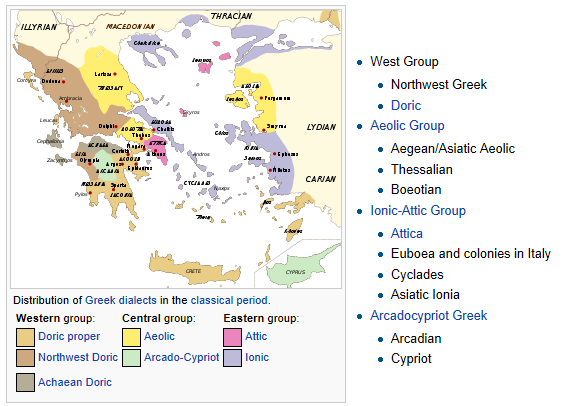
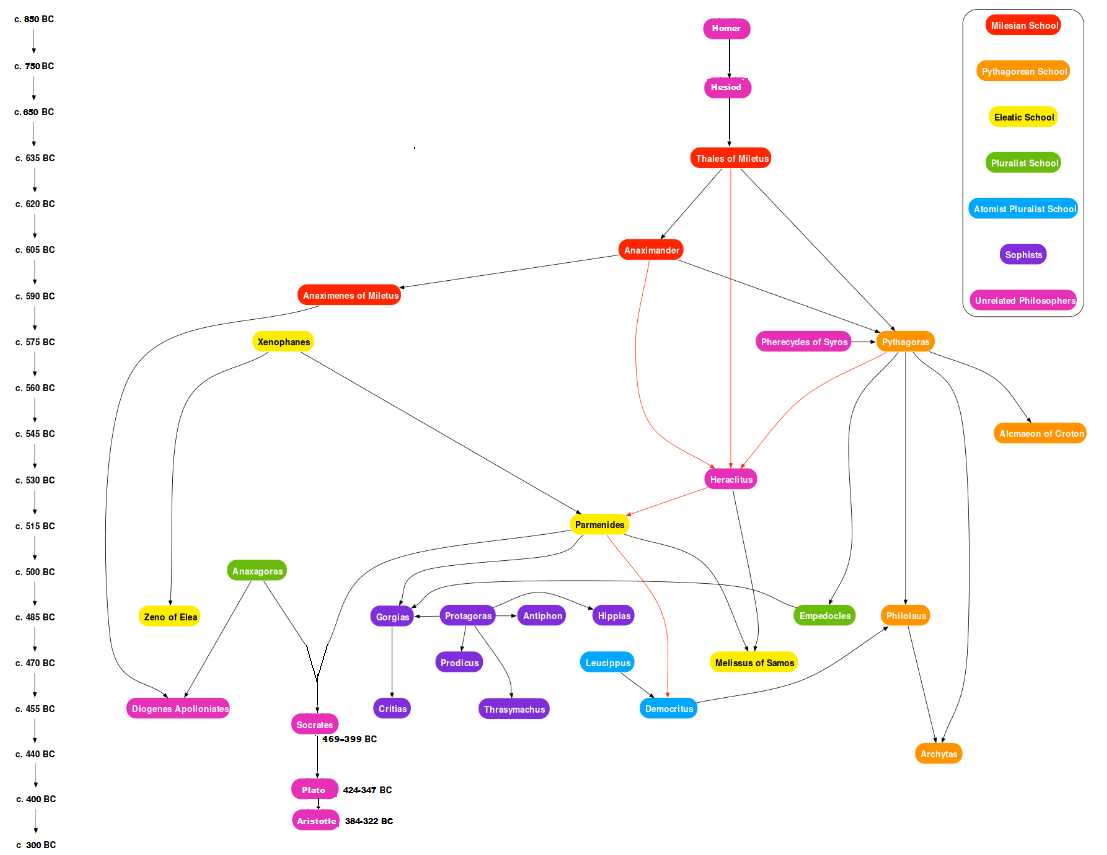
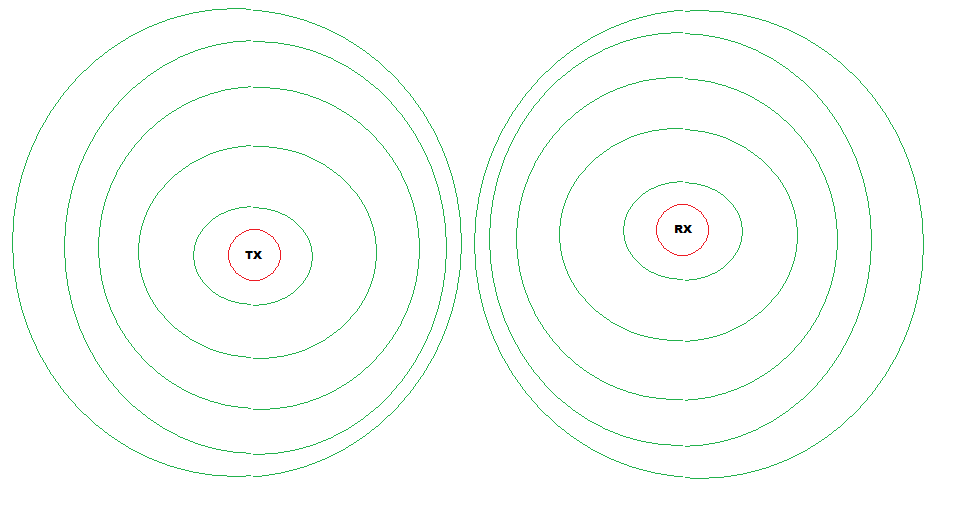
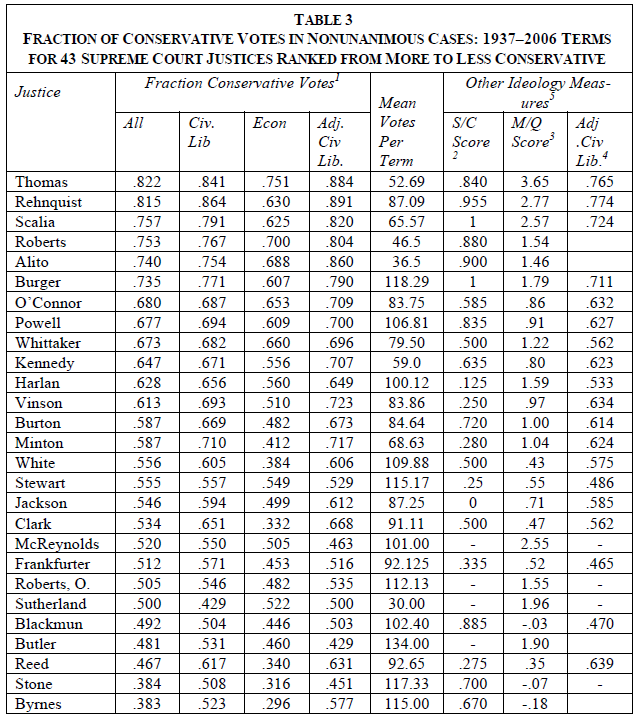
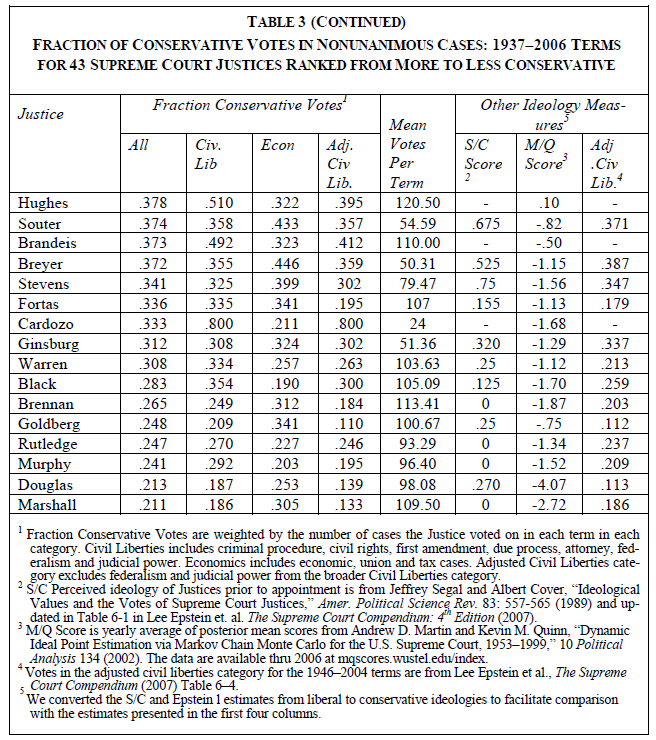 [
[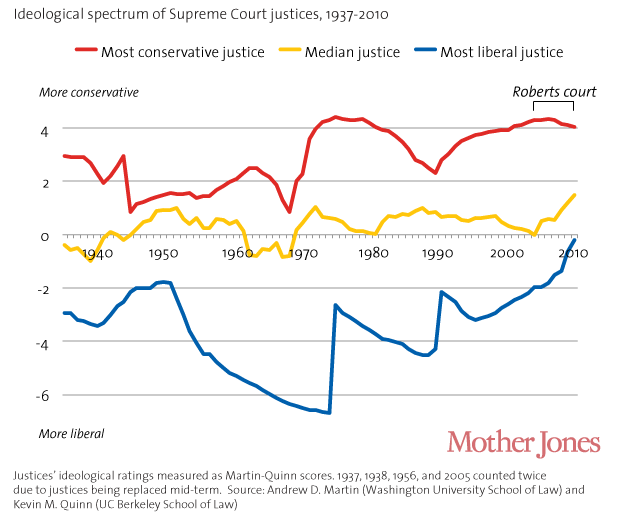
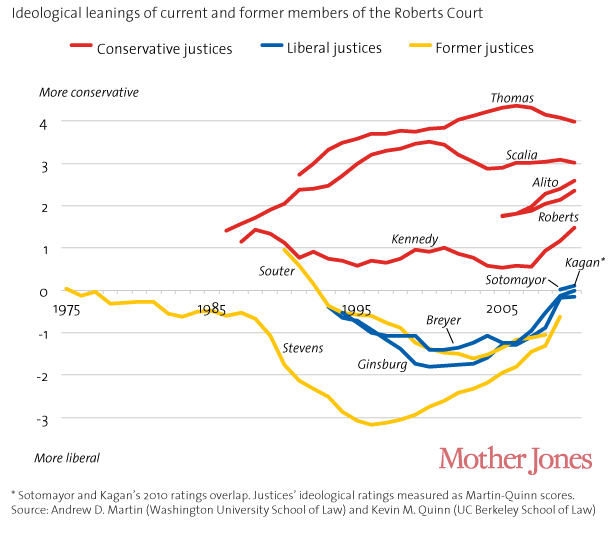
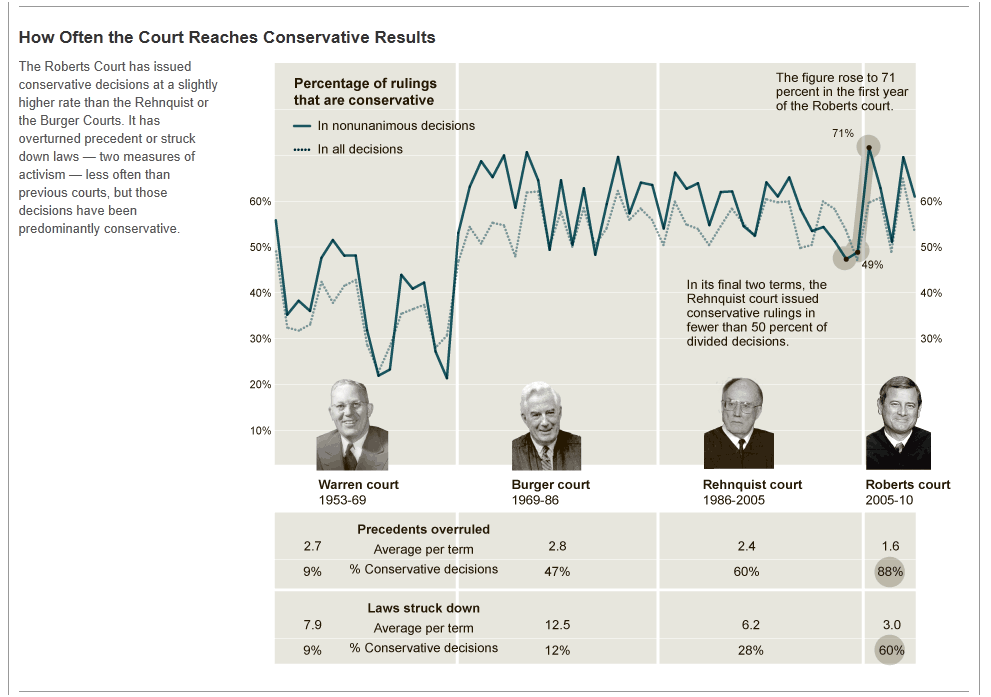
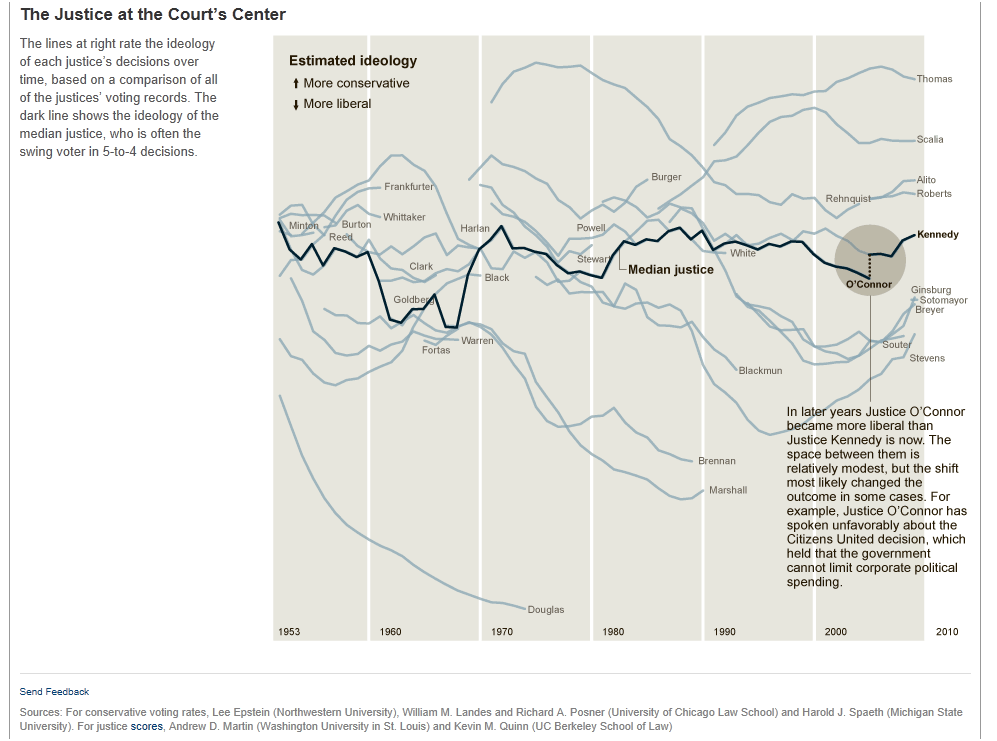 [
[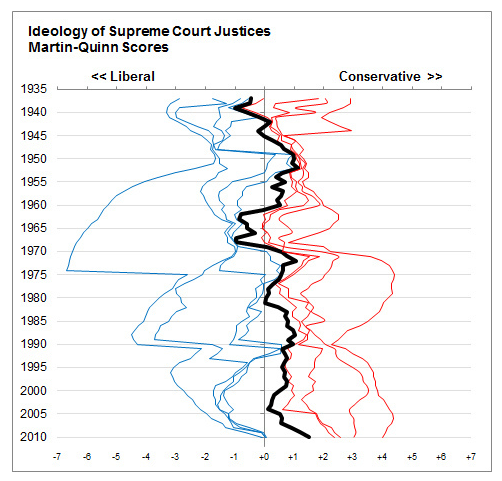 Martin-Quinn Scores [
Martin-Quinn Scores [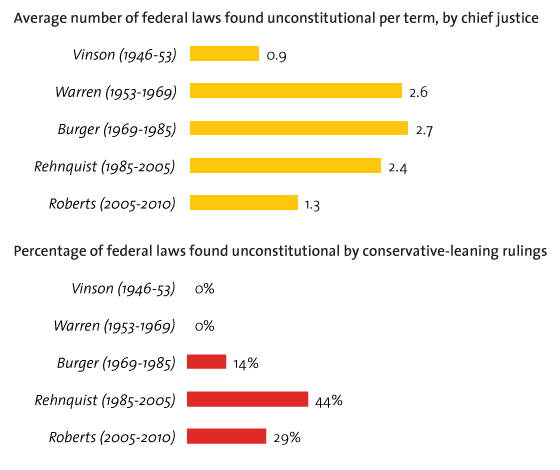
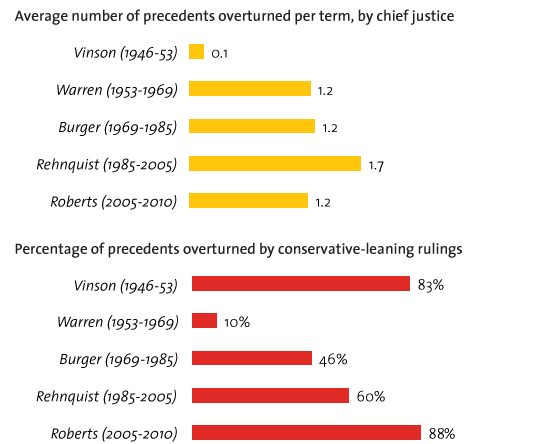 Mother Jones [
Mother Jones [








